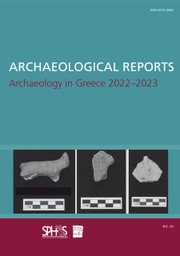No CrossRef data available.
Article contents
Ceramic analysis in Greece
Published online by Cambridge University Press: 12 December 2016
Extract
Scientific, analytical or ‘archaeometric’ techniques for investigating ceramic material have been used within archaeology for over 50 years and now constitute an indispensable tool for archaeologists in the Aegean world (see Jones 1986 for a detailed summary of early work in Greece and Italy) and beyond (Santacreu 2014). This paper provides a brief historical overview of research themes investigated by ceramic analysis in Greek archaeology along with reports on a small number of recent studies, in order to demonstrate current methodologies and results. The narrative is not chronological, either by the date of analysis or the material analysed, but instead focuses on the types of archaeological questions that ancient ceramic analysis can address in order to shed light upon who produced, distributed and consumed the ceramics under consideration. Ceramic analysis investigates both the composition and technology of fired clay vessels, evidenced most frequently in the ubiquitous broken pot sherd, which can then be used to identify provenance, production sequence and cultural tradition, as well as to provide a relative date for production, in combination with typological and seriation techniques.
- Type
- Archaeology in Greece 2015–2016
- Information
- Copyright
- Copyright © Authors, the Society for the Promotion of Hellenic Studies and the British School at Athens 2016




